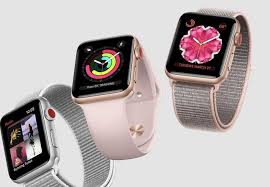Older adults can save tens of thousands of dollars annually by choosing assisted living communities over aging in place in their homes.
Unlike point solutions, Inspiren unifies resident safety, care planning, staffing, and emergency response into a single AI-powered platform.
An artificial intelligence-powered virtual assistant platform for senior living and care providers.

 Consider the Apple Watch fall detection age default. Rant on. By now, and for most, no big deal, you may know that the
Consider the Apple Watch fall detection age default. Rant on. By now, and for most, no big deal, you may know that the
Comments
From Jonas Olsson via LinkedIn
Article with a twist, enjoyed reading, fall detection have been in the R&D phase for the past 10 years, agree there is issues and contradictions related. To me it’s an obvious marketing stunt, not a mass market offering. Good some one spotted the ageism thanks for sharing!
From Martha Bader, Greystar
Best Article EVER. Don’t let those rants stop!
Thanks for being incredible!
What about when your are not wearing the watch?
My first thought when I heard about this new feature was what happens when your Apple Watch is on the charger and not on your wrist. Back in my EMT days 40+ years ago, our calls for falls and broken hips were nearly always in the early morning when people were heading to, or in the bathroom. Anyone with an Apple Watch knows that they require daily charging - mine sits on the charger all night - and if I get up in the middle of the night, I'm not wearing it.
When they become available next month, I will be trading in my Apple Watch Series 2 for a new Series 4. I'm hoping the battery life will be better. And Apple will "buy back" my old watch for $115. I'll let you know...
From LInkedIn
Erika Walker, MBA, MsED, CSACEO, SAGE WAVE Consulting, Innovative Aging Industry Strategies and Solutions
My husband uses the ECG feature. It has been very helpful.
Not Ready for Prime Time <> Dud
The adage of a former manager resonates here; “don’t over estimate what we’ll do in 2 years, but don’t underestimate what we’ll do in 5.”
Yes, plenty of legendary Apple design acumen is missing here, and their “senior” focused products and strategies are somewhat laughable.
That being the case, how many years do you suppose it might be before our doctors are prescribing Apple (or Samsung) devices? Two years, probably not. Five years? Wouldn't surprise me a bit… once the early adopter pain has been solved. It's way too early to count out consumer, and if I were a dedicated PERS fall detection company I'd be more than a little concerned.
The writings on the wall: dedicated consumer devices have begun to outpace dedicated medical devices. Yes it will be a painful transition for early adaptors, but who among us thinks that it won't happen?
31 is the new 21
It's not just Apple, it's most of the tech industry and the ecosystem that feeds it. Brilliant and callow aren't mutually exclusive. We've all seen worse "solutions" than this one, but it's disheartening to see the innovation leader stoop instead of inspire. Previous comments re fall times and whether the device is charged and worn are well taken.
The Basic Medical Alert Device Is Still BEST All-Around Option
The Apple Watch still appears to lack the full-scale safety opportunities that a traditional, around-the-neck medical alarm can offer. One major issue is that the watch would need to be taken off in order to be charged and this leaves a safety issue because the majority would charge it during the night and then run the risk of a potential fall risk during the night.
President of www.aroundtheclockmedicalalarms.com [my company], Linda Bass, recalls a client who switched from their most-basic around-the-neck, light-weight and waterproof pendant to a wireless GPS unit thinking it would be a better solution because it was advertised on the idea of being able to “go anywhere”. But she found it heavy, spent the majority of her time in and around the home (thus not needing the ability to “go anywhere”) and ultimately left it on the charger and ended up falling and laying in her apartment all alone for three days. Bass concludes “once she recovered and was out of the hospital her son called and immediately switched back to our service which protected her every day until she passed years later.”
The Apple Watch and 3G pendants all need to be recharged on a daily basis but the very basic around-the-neck medical alarm battery will last up to 5 years before needing to be replaced. Users will be notified when the battery is showing up as low and the customer will be contacted to have it replaced free of charge.
Having been researching, writing and working in the PERS industry and writing about senior issues like fall prevention I have reservations about some of the products appearing to emerge into a market that really isn't looking to be tech-savy but are just looking for safety and peace of mind in order to maintain independence in their home as they age with dignity.
Upon researching the market there are numerous companies and products to select from at different price and technology ranges but not all seem to offer such a comprehensive safety and reaction solution as the very basic medical alarm. With this option you are able to not only have fall safety covered but these very affordable devices also help with a multitude of other possible medical emergency issues that the Apple watch and other high-tech PERS device companies don't.